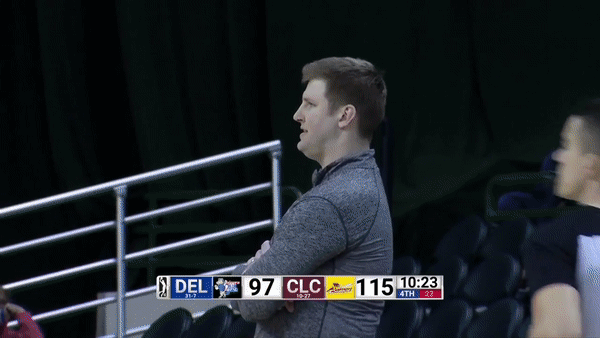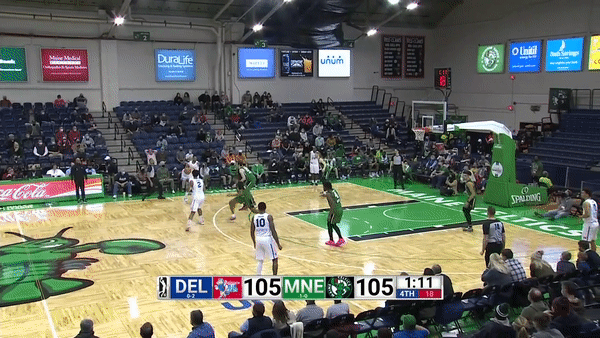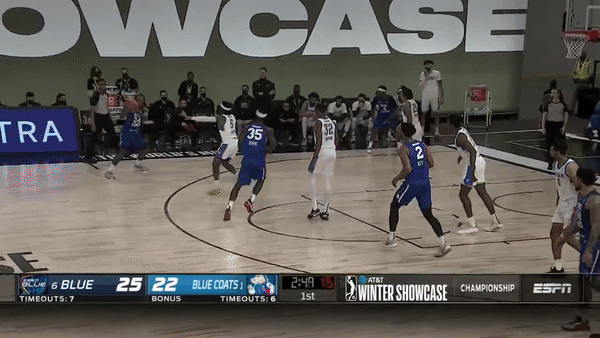Breaking Down The Offensive Development Of Pistons Two-Way Player Braxton Key
Dakota Schmidt breaks down the offensive progression that Detroit Pistons two-way player Braxton Key has shown since his time with the University of Virginia
Note: This is the final part of a two part series dedicated to breaking down the game on Detroit Pistons two-way player Braxton Key. Go below to read part one, which was dedicated to his great play on the defensive end.
During his senior season with the Virginia Cavaliers, the 6’7 forward was one of the eight players to be named to the Atlantic Coast Conference (ACC) All-Honorable Mention Team. His inclusion likely had a lot to do with his excellence on the defensive end as the pride of Nashville, Tennessee had his struggles with being a reliable offensive weapon during his entire season.
Those issues were put at center stage during that senior season through him averaging 9.9 points, 7.4 rebounds, 1.8 assists, 1.2 steals and .6 blocks on 44% from the field and 19% from beyond the arc on 2.4 attempts per game. With those lackluster percentages, Mr. Key was ugly when it came to efficiency numbers as he maintained an atrocious 49% True Shooting Percentage and awful 46% effective Field Goal Percentage.
Braxton’s immense offensive struggles during his final college season makes the 2021-22 G League season into a peculiar sensation. In his second year with Delaware, the 6’7 forward averaged 16.6 points, 7.6 rebounds, 3.3 assists, 2.1 steals, and 1.4 blocks on 49% from the field and 36% from beyond the arc on 3.7 attempts in 40 games with the team before his call-up to Detroit. Those averages allowed him to maintain a fantastic 60% True Shooting and 54% effective Field Goal Percentage.
Him going from maintaining a three-point percentage that wouldn’t be able to buy alcohol while in college to better than league average in the G League within a span of just two years is odd to say the least. As an off-ball forward, most of Braxton’s shooting came in the catch-and-shoot, where he shot 35% from beyond the arc on a total of 117 attempts last year for Delaware. In comparison, the forward shot just 20% on 54 total three-point attempts during his senior season with the Virginia Cavaliers in 2019-20.
A major contributor behind Braxton’s immense improvement in catch-and-shoot efficiency dealt with the work that he clearly did in refining his jumper. When I went back and looked at his Virginia film, each shot that you watched looked different from the last. From how his legs were spread, the way that his feet were pointed to the point where he released, there was no consistency in his approach to shooting. That led to jumpers falling short, long, left, right, and anywhere but the bottom of the net.
In another opinion on his jumper, Sports Info Solutions alum and current Inside Carolina scribe Trevor William Marks pointed out despite the shot being wonky due to the wrist action that he needs to straighten out his jumper, he’s gotten better at being able to transfer energy from his base which allows his shot to be more stable. Also his process in catch-and-shoot has improved as he’s gone from shuffling his feet to get in position, which hurts the process in which he is able to generate power.
An example of that is seen in the clip below as he struggles to get his body situated for the catch-and-shoot before he receives the ball, which is a cause behind the shot hooking left.
In the two seasons since then, the improvement that he’s made in getting rid of the mess and focusing on the power transfer in his jumper leads to him currently having a much more fluid catch-and-shoot stroke.
The improvement in his process as a catch-and-shoot threat showed in other areas of his work as a shooter. A prime example of that was shown by how he shot 42% on 26 total off-the-dribble jumpers from beyond the arc, according to Synergy Sports. While that’s a small sample size, the adjustment that he has made with being able to generate more power in his base allows his step-back’s to look a lot smoother than what it has in years past.
Despite those progressions, Braxton’s jumper isn’t the smoothest. As Trevor William Marks pointed out, his jumper isn’t the smoothest at the top of his stroke due to how he he shoots from the left or center of his body, which leads to a lot of wrist action to straighten it out. Even when his body control and power generation process looks smooth, how he has to adjust his wrist at the top of the shot could prevent him from improving his shooting efficiency if the Virginia alum gets more reps at the NBA or G League level.
Although he still needs to work on some quirks in his jumper, the improvements that he made last year in becoming a shooter that defenses have to respect opened up the rest of his offensive game at a rate that we hadn’t seen before. The best example of that was shown by his advancements as a secondary facilitator, as he averaged a career-high 3.3 assists per game with a 1.75 assist to turnover ratio last year for Delaware before he got called up to the Pistons.
With the additional attention being shown to him due to his shooting advancements, Braxton showed a real knack of being able to recognize the closeouts and react. His quick processing allows him to drive into open paints, which ends up forcing the defense to react which usually creates open looks for shooters stationed on the wing or corner. A tremendous example of that is seen below as the Pistons two-way player attacks the closeout, drives to the restricted area, and kicks it out to a wide open shooter.
Key’s knack as someone that can take advantage of disorganized defenses in mid to late shot clock situations will be a tremendous asset no matter if he’s up with the Pistons or in the G League with the Motor City Cruise working to refine his game. While it may not seem like much, that singular ability can be huge as it creates immediate opportunities for the four teammates that surround him.
Speaking of how he can work within the flow of an offense, the 6’7 forward was been an ace at being able to work off-ball dating back to his time with the University of Virginia. Whether working as a cutter or getting in position to grab offensive rebounds, our man shows a knack of taking advantage of openings to create easy opportunities to score. Last year, he averaged a career-best 2.3 offensive rebounds per game, which is anchored by him being able to quickly react to the ball, gather himself after snagging it, and then being able to score around the rim.
Currently, the jury’s is absolutely still out on whether he can be a great shooter during the rest of his pro career. That aforementioned hitch in his jumper and shooting 66% from the free throw line last year point to the 25-year-old still needing some work on that area of the game. Despite all of that, it’s apparent that the player we saw last year in the G League or NBA is a vastly improved offensive weapon than what we saw when he was playing under Tony Bennett. His path towards being an off-ball forward that can help the Pistons as a catch-and-shoot threat, secondary facilitator, and creating opportunities around the rim as a cutter or offensive rebounder seem to be as clear as filtered water.
While he is nowhere near being a perfect player, those offensive traits combined with the defensive excellence that I brought up in my prior article, Braxton Key has all of the tools to be the next great G League success story.








